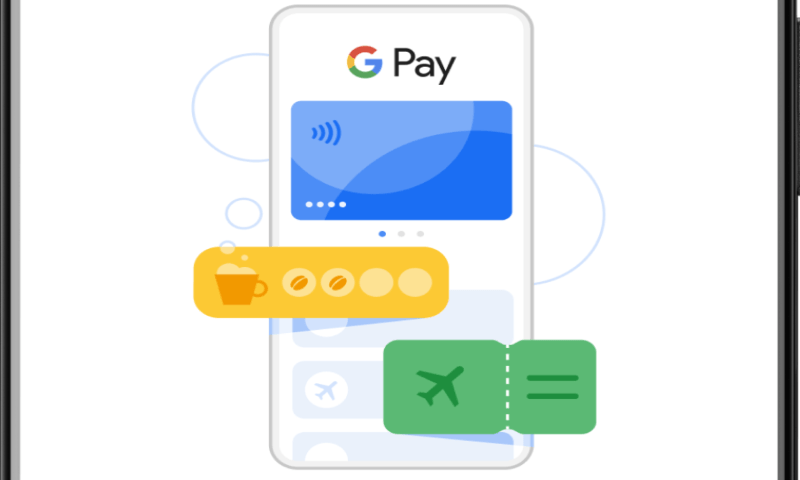In a development that made waves across Pakistan’s fintech landscape earlier this month, Google finally rolled out its Wallet service there. The tech giant’s digital payment solution, which allows users to store payment cards virtually on their Android devices, had the LinkedIn thought leaders all excited. The feed was flooded with posts and pictures of how this singular event would change the course of Pakistan’s digitisation journey like nothing we have ever seen before.
But beyond the self-promoting intellectual regurgitation of LinkedIn, what exactly does this launch mean for the country’s payments ecosystem? Is this really going to be as revolutionary as the aspiring influencers tell us? Or just another minor product launch? The answer, as is often the case with technology adoption in emerging markets, lies somewhere in between.
For starters, Google’s entry is indeed a welcome development. After all, Pakistan was probably the biggest country that didn’t have this service. Before we get into that, let’s first understand what the product is and isn’t.
Essentially, the wallet tokenises and digitalises your existing debit and credit cards, allowing users to simply tap their phones at NFC [Near field communication] -enabled point-of-sale terminals to pay for stuff. The convenience factor is undeniable, for it eliminates the need to carry bulky wallets, but for now, it is only for Android users.
Promising as it may be, its current universe is rather limited since it caters to only payment cards, of which there are 56.4m in Pakistan
“Google Wallet’s launch is a sign of how much the country’s digital economy has evolved and signals the market’s potential. The biggest benefit is to the customer as it makes the whole point-of-sale transaction much more seamless. In fact, we have seen in countries like the UAE and Saudi Arabia how the launch of Apple Pay boosted transaction volumes significantly.
“We expect Pakistan to undergo a similar shift as Google’s brand pull should help familiarise customers with mobile phone merchant payments and create trust among all parties. That’d also help accelerate the uptake of Raast P2M [peer to merchant],” says Saad Niazi, the chief executive officer of Keenu, a licensed electronic money institution and a major point of sale acquirer.
The second point perhaps deserves a deeper emphasis. While the Raast P2M module was launched towards the end of 2023 and reportedly saw the onboarding of an exceptional 700,000 merchants since then, the adoption is yet to pick up pace. According to the latest payments systems review, 0.9 million transactions worth Rs2.9 billion took place between September and December 2024.
On the other hand, hundreds of millions of digital transactions at physical stores take place through the peer-to-peer rails. Just recall how many times you have paid for Careem through Raast or interbank funds transfer, even though it was for a commercial purpose. By embedding a convenient tap-to-pay functionality, Google Wallet — given its brand — can create a behavioural change among customers to the various new technologies like request-to-pay and scan-and-pay, among others.
Promising as it may be, the current universe of Google Wallet users will nevertheless be rather limited. Since the offering is limited to just cards, it caters to only payment cards, of which there are 56.4m in Pakistan. On the other hand, the majority of digital payment adopters use mobile apps of branchless players like JazzCash and Easypaisa (now a digital retail bank), numbering almost 64m and another 21m through scheduled banks.
There is absolutely no comparison between the quantum, whether by throughput or volume, between card-based and mobile-based payments.
“There is no doubt that Google Wallet coming to Pakistan is a welcome signal that large global players are now looking at Pakistan’s huge and growing market to enable digital payments. However, there is more to be done. The model of growth for digital payments in Pakistan should consider the global south as an example.
“Brazil’s Pix and India’s Unified Payments Interface have shown that person-to-person and person-to-merchant payment infrastructures, if done correctly and backed by sustainable policy, can dwarf traditional card-based payments for which expensive infrastructure is needed,” says Karim Jindani, the chief executive officer of Paysys Labs, a leading payments technology provider.
Even when we ignore how the lion’s share of digital transactions in Pakistan originate from apps and limit ourselves to a relatively smaller universe of cards, there is another problem. Google Wallet does tap-and-pay, which requires NFC availability. As it happens, the majority of the local phones do not have that functionality, in part because the domestic assemblers deliberately cut down on features to save costs.
Though there is no data pointing to its extent, the proportion of smartphones with NFCs is unlikely to exceed a fifth. However, this is perhaps only a short or medium-term challenge as the additional cost of adding NFC in smartphones is rather low for assemblers. When there is going to be demand, they will respond. On the acquiring side, most point-of-sale operators have recently upgraded their machines and now support card-based tap-to-pay already.
In any case, issuers are excited, if it wasn’t clear from LinkedIn. “For JazzCash, Google Wallet represents an interesting opportunity to expand our card footprint in a predominantly mobile-first customer base,” says Aamir Aftab, Chief Product Officer of JazzCash. “While our 13m-plus customers primarily interact through our mobile app for wallet-based transactions, integrating with Google Wallet allows us to also encourage card adoption while still letting them leverage smartphones.”
For the most part, Pakistan’s fintech ecosystem will carve its own trajectory, shaped more by homegrown innovations that address our unique problems or by solutions that adapt to those needs.
The writer is the co-founder of Data Darbar
Published in Dawn, The Business and Finance Weekly, March 31st, 2025










